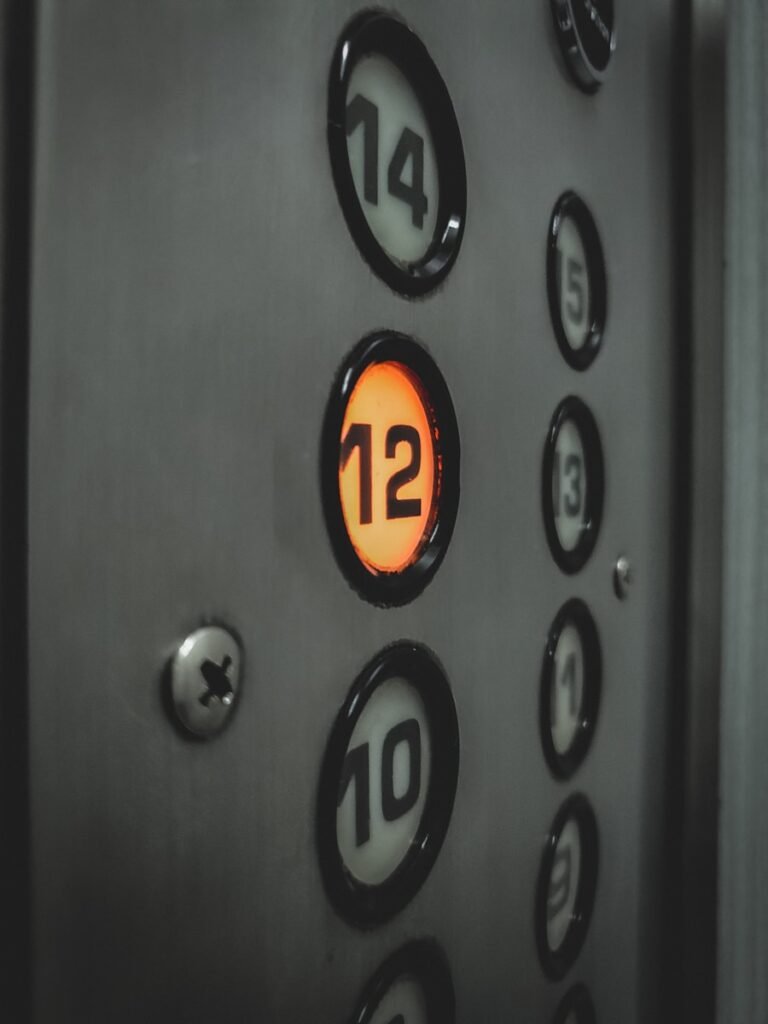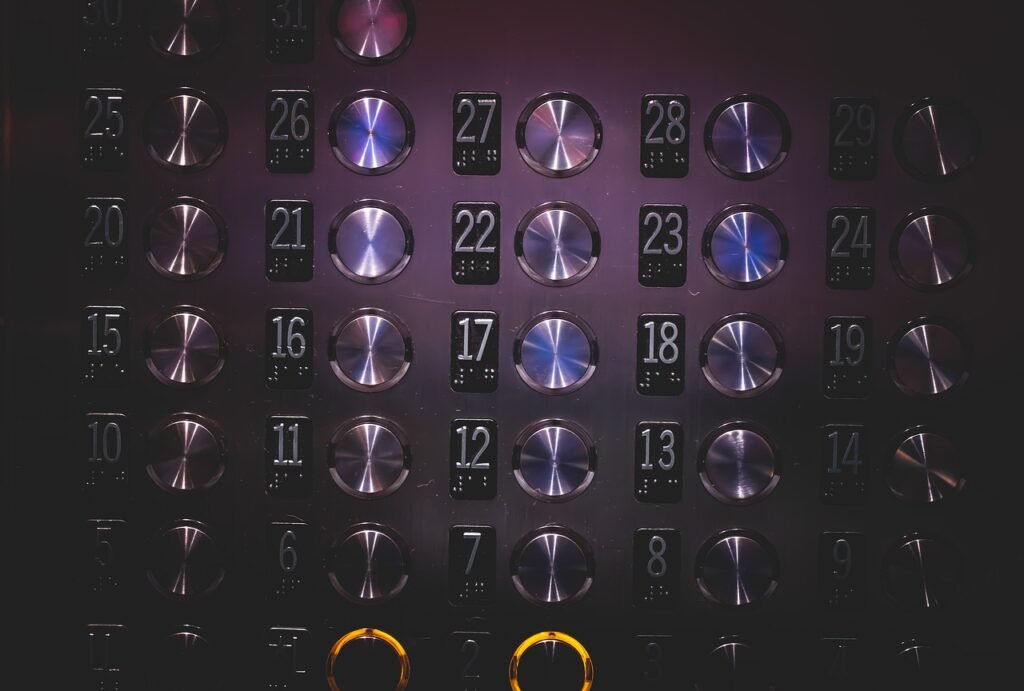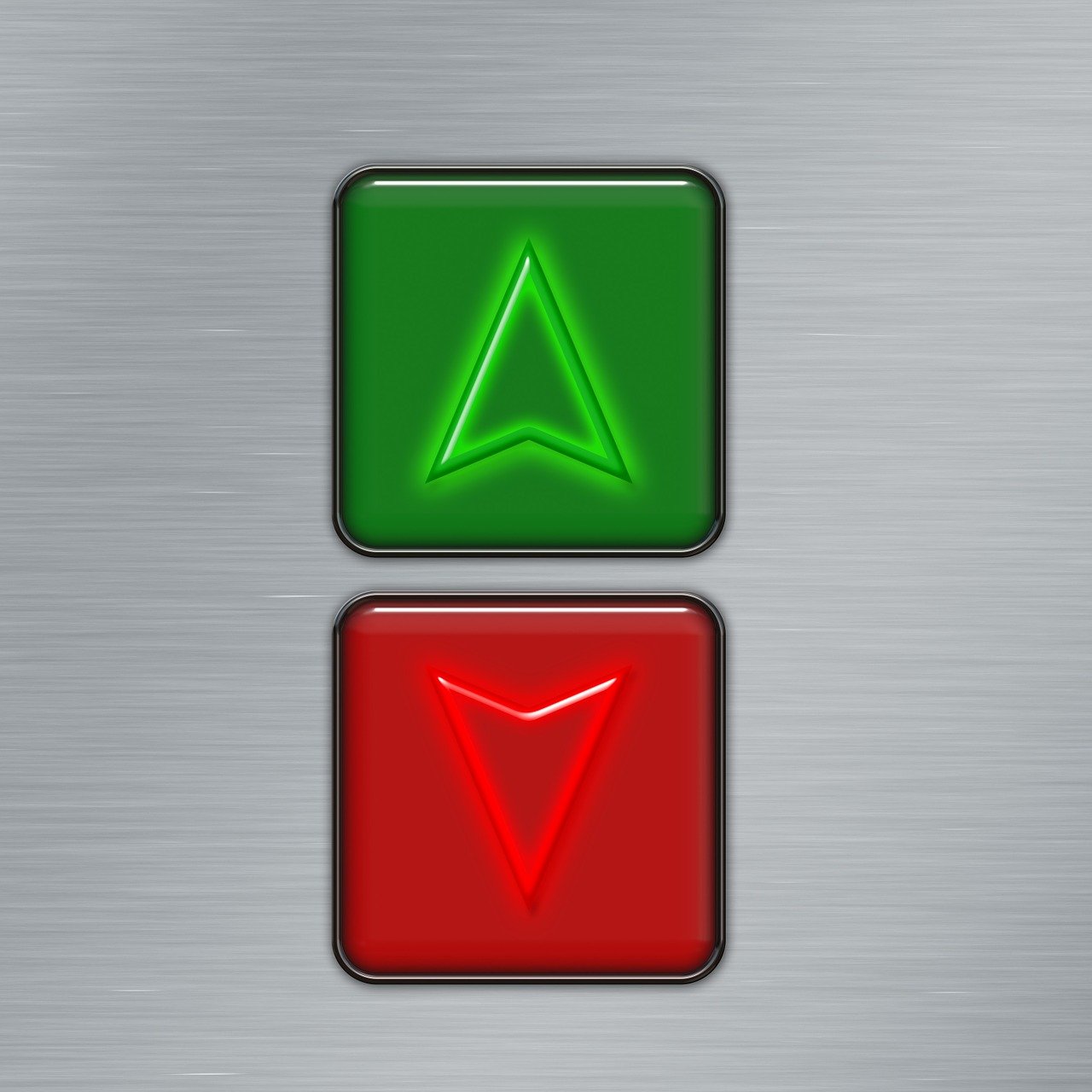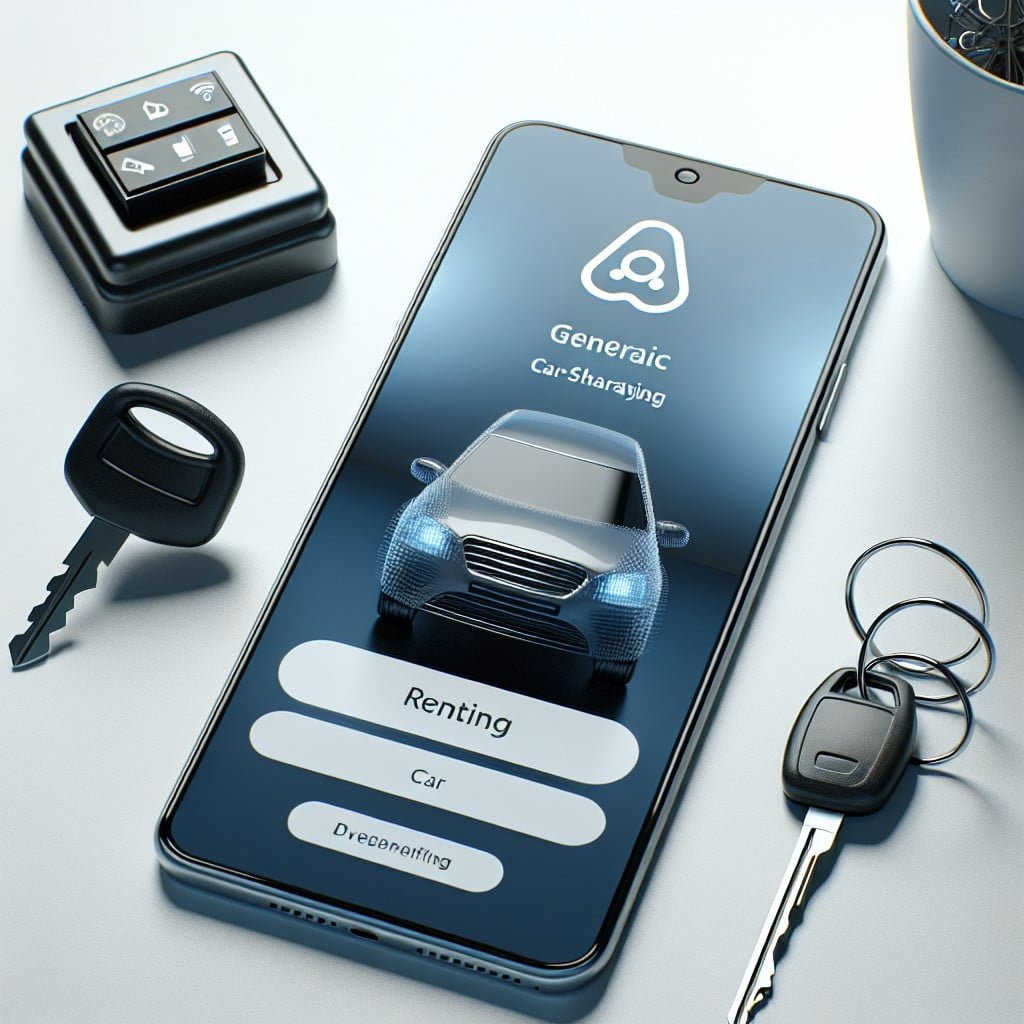Introduction: Understanding the Role of Elevator Buttons
Contents
- 1 Introduction: Understanding the Role of Elevator Buttons
- 2 The Evolution of Elevator Buttons
- 3 Types of Elevator Buttons
- 4 Push Button Systems: A Classic Approach
- 5 Touch Panels: Modern Convenience
- 6 Voice-Activated Controls: The Future of Elevator Technology
- 7 Accessibility Considerations
- 8 Design Considerations
- 9
- 10 Maintenance and Upkeep
- 11 Common Issues and Troubleshooting
- 12 Safety Features
- 13 Integration with Building Systems
- 14 Customization Options
- 15 User Interface Design
- 16 Psychological Impact
- 17
- 18 Cultural and Regional Differences
- 19 Environmental Impact
- 20 Future Trends
- 21 Smart Elevator Systems
- 22 Seamless Integration with Smart Buildings
- 23 User Feedback and Iterative Design
- 24 Regulatory Compliance
- 25 Education and Training
- 26 The Human Element
- 27 The Role of Architects and Designers
- 28 Cultural Significance
- 29 Historical Perspectives
- 30 Conclusion
- 31 Looking Ahead: Innovations at the Horizon
Elevator buttons may additionally appear to be an earthly part of regular life, but they play a critical function inside the functioning of elevators, ensuring easy and efficient transportation inside homes of all sizes. Without those buttons, passengers would not have any manner to talk their favored vacation spot to the elevator gadget, leading to confusion and inefficiency in vertical tour logistics.
The Evolution of Elevator Buttons
From simple mechanical switches to advanced contact panels, elevator buttons have evolved notably over the years, reflecting advancements in era and layout. Early elevator structures featured guide levers or pulleys operated via attendants, but as buildings grew taller and visitors extended, the want for self-provider controls became apparent, mainly due to the improvement of push-button systems and, sooner or later, greater sophisticated interfaces.
Types of Elevator Buttons
There are various kinds of elevator buttons, which include conventional push buttons, contact-sensitive panels, and even voice-activated controls, each providing its unique set of benefits and challenges. Push buttons remain popular because of their familiarity and reliability, at the same time as touch panels provide a more present-day and glossy aesthetic, and voice-activated controls constitute the reducing edge of comfort and accessibility.
Push Button Systems: A Classic Approach
Push button structures are a number of the maximum common varieties of elevator controls, presenting easy but reliable mechanical switches that customers press to choose their preferred floor. These buttons normally illuminate while pressed, imparting visible feedback to customers and confirming their selection, which saves you from accidental presses or misunderstandings.

Touch Panels: Modern Convenience
Touch panels have become increasingly famous in modern-day elevators, supplying customers with an intuitive interface and sleek design that complements the general user experience. Instead of physical buttons, those panels function as a flat touchscreen floor that responds to the touch of a finger, permitting customers to pick their favored floor with a simple tap or swipe gesture.
Voice-Activated Controls: The Future of Elevator Technology
With improvements in the voice popularity era, a few elevators now feature voice-activated controls, allowing customers to simply speak their desired ground rather than pressing buttons. This fingers-loose technique gives convenience and accessibility for individuals with mobility impairments or those sporting heavy loads, and it represents a substantial step forward within the evolution of elevator interface design.
Accessibility Considerations
Elevator buttons play a critical position in ensuring accessibility for individuals with disabilities, with capabilities that include braille labels and auditory feedback making elevators more consumer-friendly for all. These accessibility capabilities are vital for ensuring that everyone, regardless of bodily ability, can independently navigate homes and access the services they need.
Design Considerations
The design of the elevator button is cautiously taken into consideration to ensure usability, with factors along with button size, spacing, and labeling all gambling a function in developing an intuitive and user-friendly interface. Buttons must be large sufficient to be easily pressed by way of customers of all ages and capabilities, with clear and concise labeling that conveys the intended motive of every button at a glance.
Maintenance and Upkeep
Regular protection is crucial to preserve elevator buttons functioning nicely, with ordinary inspections and cleaning helping to prevent malfunctions and make certain dependable operations. Buttons can come to be worn or broken through the years because of repeated use, exposure to environmental elements together with dirt or moisture, or mechanical issues in the elevator system, so it is important to cope with any issues right away to keep away from service disruptions.
Common Issues and Troubleshooting
Despite their simplicity, elevator button can occasionally revel in issues together with sticking, unresponsiveness, or incorrect floor selection, which may additionally require troubleshooting via educated technicians. These problems may result from a variety of factors, consisting of mechanical wear and tear, electrical faults, or software system faults, so troubleshooting may contain a combination of diagnostic assessments and bodily inspections to become aware of and resolve the underlying hassle.
Safety Features
Elevator buttons are geared up with diverse protection functions to save you from accidents and ensure passenger safety, inclusive of emergency stop buttons and alarms for summoning assistance. These safety features are designed to offer passengers an experience of protection and manipulation, permitting them to intervene in the occasion of an emergency or sudden state of affairs all through the elevator journey.
Integration with Building Systems
Elevator button are frequently included with building control systems, allowing for centralized control and monitoring of elevator operations for stronger efficiency and safety. Integration with building systems permits functions that include far-flung diagnostics, predictive upkeep, and real-time monitoring of elevator performance, helping building owners and facility managers optimize the operation of their vertical transportation structures.
Customization Options
Many elevator manufacturers provide customization alternatives for buttons, permitting building owners to tailor the appearance and capability of elevator controls to suit their particular desires and preferences. Customization alternatives may additionally encompass the capacity to select button hues, substances, and layouts, in addition to the option to feature branding factors or custom labeling to enhance the cultured appeal of elevator interiors.
Energy Efficiency Considerations
Efforts are underway to make elevator structures more power-green, with improvements inclusive of vacation spot dispatching and smart scheduling supporting to reduce strength intake without compromising performance. By optimizing the routing and scheduling of elevator vehicles based totally on passenger calls and site visitors’ styles, these electricity-saving capabilities can assist lessen wasted energy and limit the environmental effect of elevator operation.
User Interface Design
The layout of elevator buttons is an essential factor of user interface design, with considerations together with button layout, color assessment, and feedback mechanisms all contributing to a tremendous consumer revel. A clear and intuitive consumer interface design ensures that passengers can without difficulty navigate elevator controls and select their preferred floor without confusion or frustration, improving usual satisfaction with the elevator experience.
Psychological Impact
The layout of the elevator button can also have a mental impact on customers, with factors that include button placement and labeling influencing perceived ease of use and average pleasure. Well-designed elevator controls can evoke an experience of self-assurance and consideration in passengers, whereas poorly designed controls may also result in emotions of frustration or tension, specifically in excessive-strain situations consisting of emergency evacuations.
Cultural and Regional Differences
Cultural and local variations may additionally affect the design and utilization of elevator buttons, with possibilities for button layout, labeling conventions, and consumer interface layout varying from one region to some other. For instance, in a few cultures, the range “four” can be neglected by elevator controls due to superstitions about the range’s affiliation with horrific success, even in others, it can be blanketed without hesitation.
Environmental Impact
The manufacturing and disposal of elevator buttons can have environmental implications, with efforts being made to limit waste and reduce the carbon footprint associated with elevator manufacturing and preservation. Sustainable materials, consisting of recycled plastics or responsibly sourced metals, may be used inside the manufacture of elevator buttons to reduce environmental impact, even as recycling applications or take-back projects can be carried out to make certain accountable disposal at the quit of the product lifecycle.
Future Trends
Looking ahead, advancements in the era inclusive of synthetic intelligence, gadget mastering, and Internet of Things (IoT) connectivity are predicted to in addition revolutionize the design and capability of elevator buttons. These technologies may additionally allow features that include predictive renovation, personalized user studies, and seamless integration with clever building systems, improving both the performance and convenience of elevator travel in the future.
Smart Elevator Systems
Smart elevator systems, prepared with sensors and facts analytics abilities, promise to beautify performance and user enjoyment by optimizing elevator operations based totally on real-time calls for and site visitors’ styles. By analyzing facts on passenger go-with-the-flow, destination alternatives, and top usage instances, clever elevator systems can dynamically modify elevator schedules and routing to reduce wait times, lessen congestion, and enhance overall provider pleasantness for passengers.
Seamless Integration with Smart Buildings
Elevator buttons will increasingly be incorporated with other smart construction technologies, taking into consideration seamless communique and coordination among elevators, light systems, safety structures, and more. By sharing facts and coordinating operations with other constructing structures, elevators can come to be more attentive to personal desires and greater tightly included in the overall constructing surroundings, improving both comfort and performance for building occupants.
User Feedback and Iterative Design
User remarks play an important position in the iterative design procedure of elevator buttons, with manufacturers continually refining their designs based on personal preferences and evolving technological competencies. By soliciting feedback from passengers, building owners, and upkeep technicians, producers can discover regions for development and put in force changes to enhance usability, accessibility, and ordinary consumer pleasure with elevator controls.
Regulatory Compliance
Elevator buttons must comply with various regulatory requirements and pointers, making sure that they meet protection, accessibility, and usability requirements mounted by way of government agencies and industry agencies. Regulatory compliance may contain adherence to requirements which include the Americans with Disabilities Act (ADA) for accessibility capabilities, as well as safety standards mounted via groups such as the International Organization for Standardization (ISO) or the American Society of Mechanical Engineers (ASME).
Education and Training
Proper education and training are essential for elevator technicians and constructing managers responsible for retaining and servicing elevator buttons, making sure that they have the understanding and abilities to troubleshoot troubles and perform upkeep competently and correctly. Training applications may additionally cover subjects including electrical structures, mechanical additives, software diagnostics, and protection strategies, equipping technicians with the tools and understanding to maintain elevator structures running smoothly and reliably.

The Human Element
Despite advancements in generation, the human detail stays primary to the layout and operation of elevator buttons, with considerations for person options, conduct, and luxury riding ongoing innovation in this discipline. By understanding the desires and expectations of passengers, manufacturers can design elevator controls that might be intuitive, person-pleasant, and aware of the various wishes of constructing occupants, improving standard pride and value.
The Role of Architects and Designers
Architects and architects play a vital function in shaping the person’s enjoyment of elevators, consisting of the layout and location of elevator buttons inside homes to maximize convenience and performance. By collaborating carefully with architects and indoors designers, elevator producers can make certain that elevator controls are seamlessly included in the general architectural design, improving both functionality and aesthetic enchantment.
Cultural Significance
Elevator buttons may additionally have cultural importance, serving as symbols of progress, modernity, and social fame in some societies, wherein admission to elevators represents upward mobility and get right of entry to to possibilities. In densely populated urban regions, the availability and satisfaction of elevator carriers may have a tremendous impact on assets’ values and nice of existence, making elevators and their controls a crucial component of urban infrastructure and development.
Historical Perspectives
A look returned at the history of elevator buttons exhibits how they’ve evolved alongside improvements in the elevator era, architecture, and urban improvement, reflecting changing societal norms and values. Early elevator controls were simple mechanical switches operated by attendants, but as homes grew taller and more complex, the want for self-provider controls became apparent, mainly due to the improvement of push-button structures and, in the end, greater sophisticated touch panels and digital interfaces.
Conclusion
In conclusion, elevator buttons might also appear like a small detail, however, they play a big position in the green functioning of homes and the general consumer experience of vertical transportation structures. Whether they are simple mechanical switches or superior touch panels, elevator button serve as the interface between passengers and the elevator device, enabling safe, handy, and reliable transportation within buildings of all sizes and types.

Looking Ahead: Innovations at the Horizon
As generation keeps conforming, we can count on elevator buttons to end up even more intuitive, green, and seamlessly included with smart construction systems, enhancing safety and convenience for users around the sector. With ongoing advancements in artificial intelligence, system studies, and connectivity, the destiny of elevator controls holds interesting opportunities for enhancing the performance, accessibility, and the average person’s enjoyment of vertical transportation structures in the future years.
Ali Express Elevator Button











